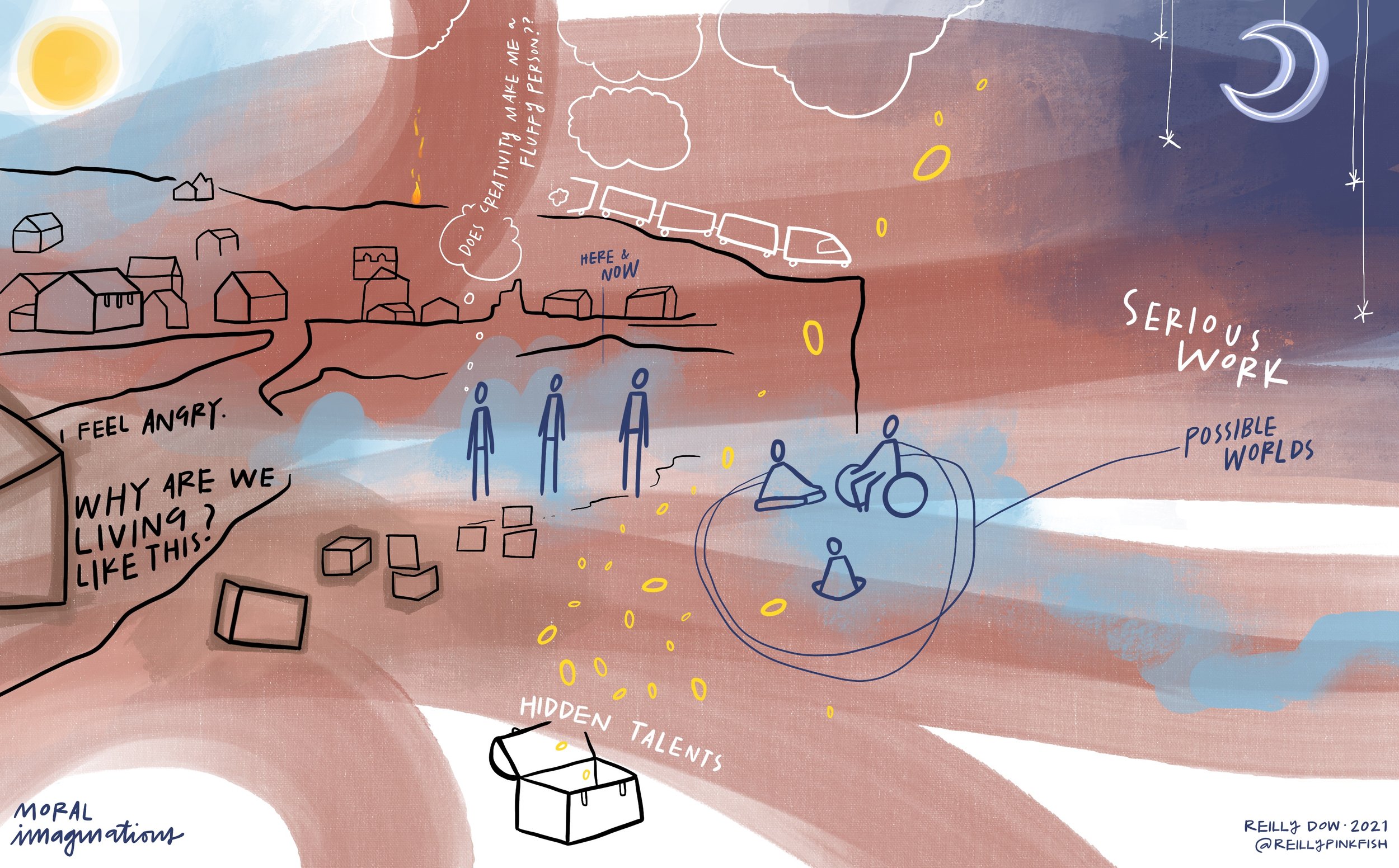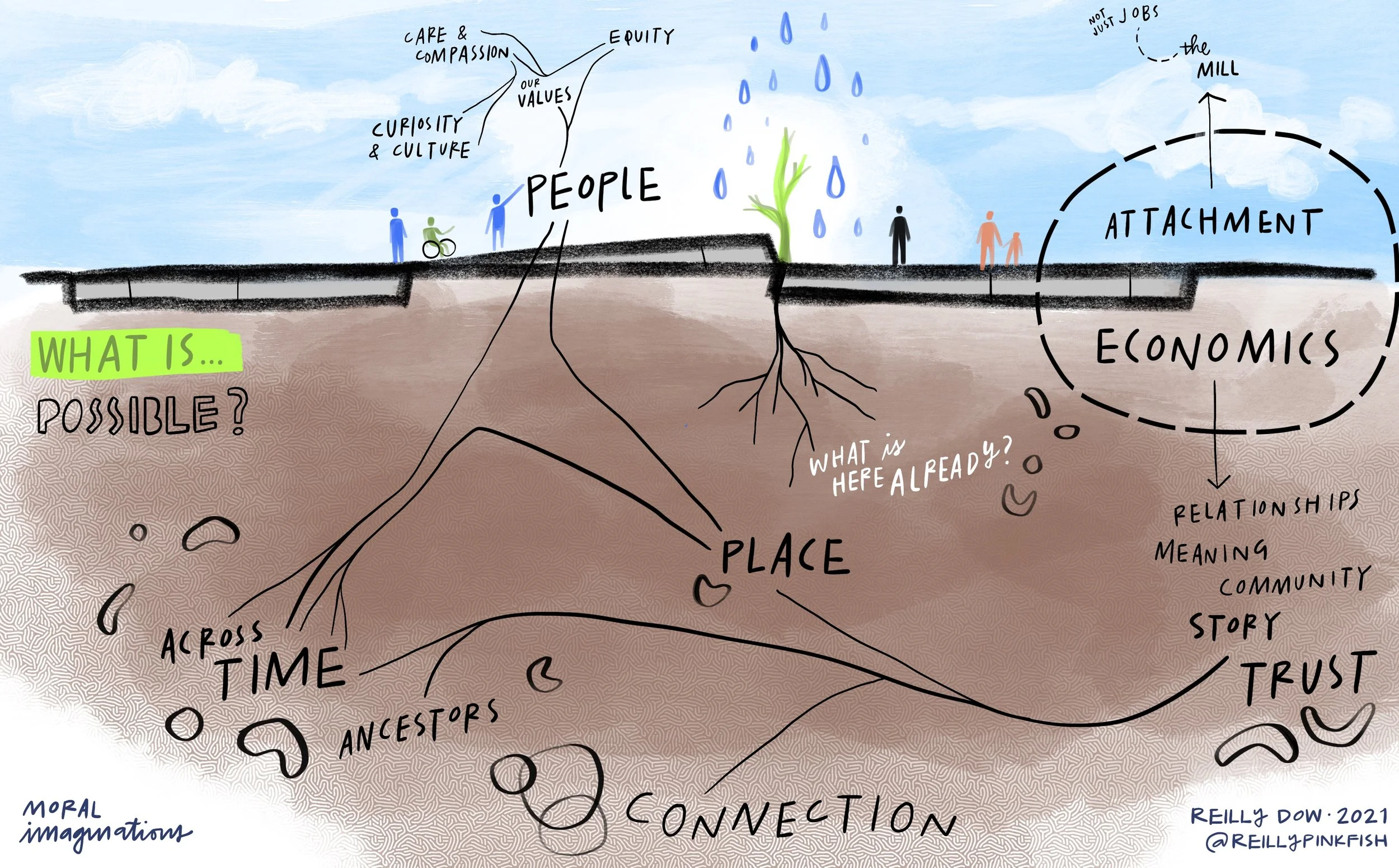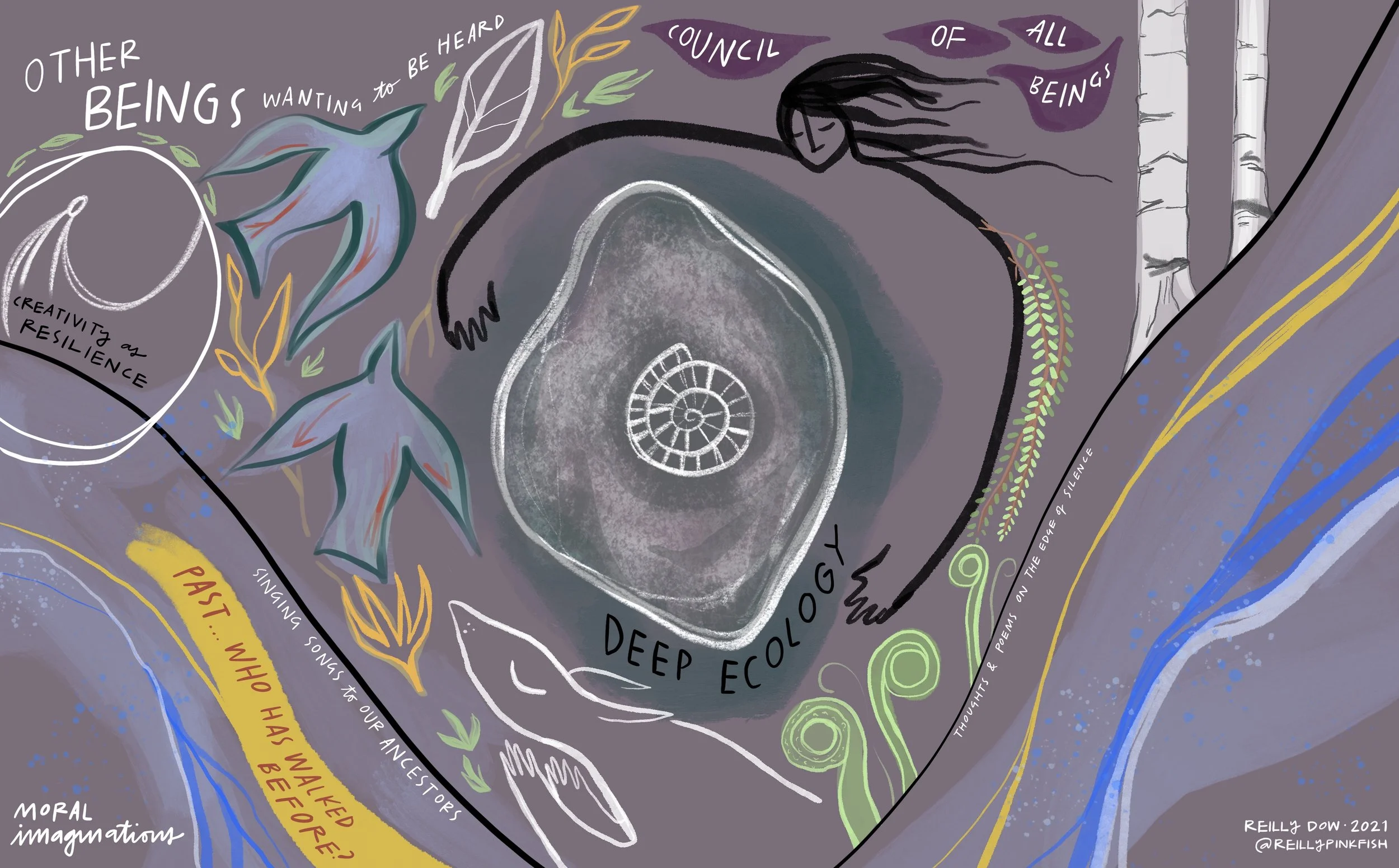Watchet Imagines
A 6-month Community Imagination Lab which invited local community members to reimagine their relationships to themselves, each other, and the world
It helped people not just process their own ideas, but rethink what was possible, build friendships and understanding of difference, create shared purpose and values.

What were we invited to do?
Moral Imaginations was approached in September 2020 by the Onion Collective, a local social enterprise, after they saw The Impossible Train Story and resonated with the story and approach. Onion Collective was planning to write a collective book on community ‘attachment’ economics and their dream was to include written pieces from the local community. The chapters from the local community would communicate the things that really matter to them — that need to be placed at the heart of a new economy. They were looking for a process to support the community imagining to explore economic futures for Watchet.
Moral Imaginations designed an immersive imagination journey called a Moral Imagining Lab that would support 30 community members to vision an alternative economy for Watchet.
Moral Imaginations designed an immersive imagination journey called a Moral Imagining Lab that would support 30 community members to vision an alternative economy for Watchet.
The week-long imagination lab would be delivered virtually, with community members supported to participate using Zoom and Google Docs and given onboarding support as part of the process. The idea was to use our experience of working with narrative design, collective imagination and embodied cognition to offer a journey that would be transformative for the community and support them to access their deepest imaginations through a state of pressure-free exploration and psychological safety.
What happened in the Imagining Lab?
Over the five days of the lab, we worked with 30 community members to explore the future, connect to the past and make sense of what a new identity for Watchet in the 21st century. We worked with metaphor, story, collective imagining practice and deep reflection to generate shared visions, images, shared metaphors and language. This was then followed by a weekly reflection session for eight weeks following the Lab, to integrate the shifts in awareness and work with the images, metaphors, questions and inquiries that emerged.
There were five stages to the lab, based on our core Moral Imaginations Framework:
Opening the Portal (through the Impossible Train Story in the context of a new economy for Watchet)
More-than-human World (exploring more than human perspectives)
Future Generations (exploring a future generation perspective)
Connecting with Ancestors (exploring a connection to ancestors and place)
Closing and Celebration (showcasing the artwork and collective imaginations)
Through a team of 4 co-facilitators, an artist and graphic facilitator, we delivered an experiential journey that was carefully and rigorously designed based on our methods and approaches, and also adaptive and emergent based on the needs of the participants.
What was the outcome?
Over the four days, through a digital scrapbook, the community collectively created 121 pages of poetry, images, prose, future visions and speculative fiction, articulating their new-found motivation, hope and sense of possibility for the future. As part of our approach we also worked with community members to produce a shared immersive audio piece which captured the collective creativity of the group, creating a collective poem from the More-than-human Day of the Imagination Lab.
The community continued to host their own, self-organised imagination sessions (which we supported with our materials) after the end of the live Imagination Lab. This continued for six months with continuing enthusiasm and creativity, which was perhaps the most transformative aspect of the intervention.
Community members created new artworks, poetry, drawings and even songs and continued to record, share and express creativity in the 6 months following the lab. It’s as if the 5 day Imagination Lab liberated the community’s imaginations and visions and gave them the permission and confidence to keep creating, long after the lab was over.
As part of the Lab, the community was supported to create new collective metaphors to capture their explorations, discoveries and collective sentiments about the past and the future. One example can be seen below: “sticks in the mud” was collectively created to describe the people the community felt fought to resist anything new, any new ideas, shooting them down:



